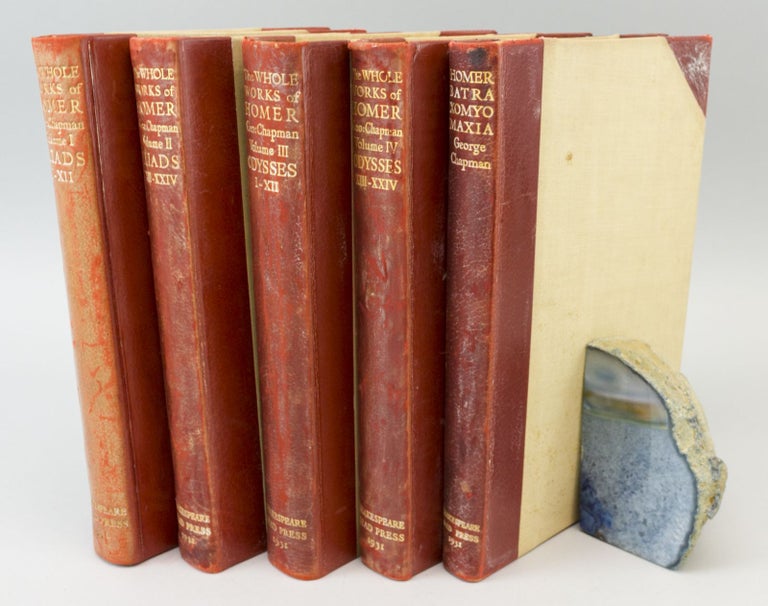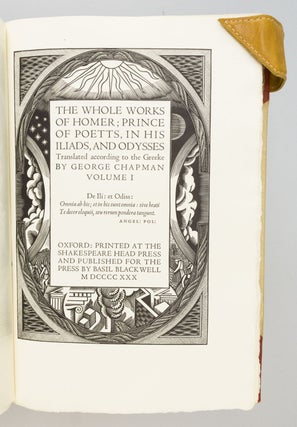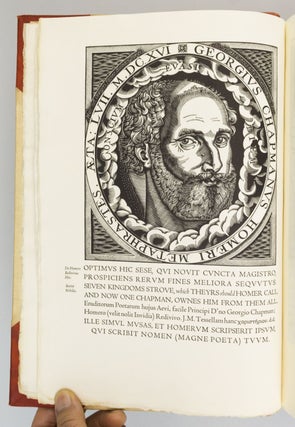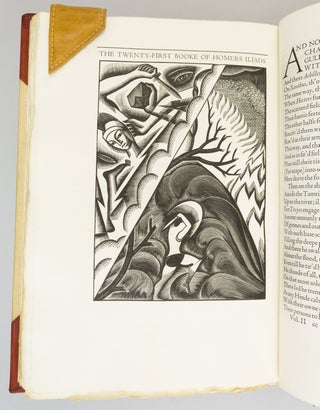THE WORKS.
(Oxford: Shakespeare Head Press, 1930-31). 292 x 203 mm. (11 1/2 x 8"). Five volumes. Translated by George Chapman. No. 302 OF 450 COPIES on paper (and 10 on vellum).
Publisher's original burnt-orange half morocco over cream-colored buckram, edges untrimmed. In a later paper-covered slipcase. With 52 wood engravings by John Farleigh, comprised of two frontispieces, woodcut-framed title pages to volumes I and V, and 48 full-page cuts. With ink ownership inscription of Daisy Patterson Hall on limitations pages. Ransom, p. 17; Franklin, p. 236; Horne, p. 185. ◆Overall fading and significant chafing to spines, minor dressing residue to leather, faint dampstain covering about a third of the back cover of volume V (a few tiny stray stains on the spine of the same volume), but the bindings showing little wear, and the sides of the other volumes (often found foxed) virtually spotless and very pleasing. Internally a beautiful copy, as fresh and clean as one could hope for.
This is the major modern fine press edition of Homer, with illustrations by one of the most popular woodcut artists of the period. The text here is Chapman's Homer, which Day calls "the greatest verse translation of the Renaissance" and perhaps "the greatest English translation of Homer." George Chapman (1559/60-1634) made his name as a poet and playwright before turning to translating classical literature. His was the first English translation of Homer to be done directly from the Greek, and it remained the standard translation until Pope's 18th century version. Chapman enjoyed a renewed popularity among 19th century poets: Keats composed a much-quoted sonnet, "On First Looking into Chapman's Homer," which begins "Much have I travell'd in the realms of gold"; and Swinburne said, "No praise can be too warm or high for the power, the freshness, the indefatigable strength and inextinguishable fire which animate this exalted work." Wood engraver, painter, illustrator, writer, and teacher John Farleigh (1900-65) had a style perfectly suited to an edition of Homer. In "A History of British Wood Engraving," Albert Garrett writes that "in terms of modern engraving, John Farleigh understood the purity of Greek engraving and largely formed his style upon the few known examples. Like the Greek engraver, he also understood the human form and could express it." He was one of the major engravers of the new British School, which focused on broadening the medium's range of expression and techniques. (ST12683-011b)
Price: $950.00




